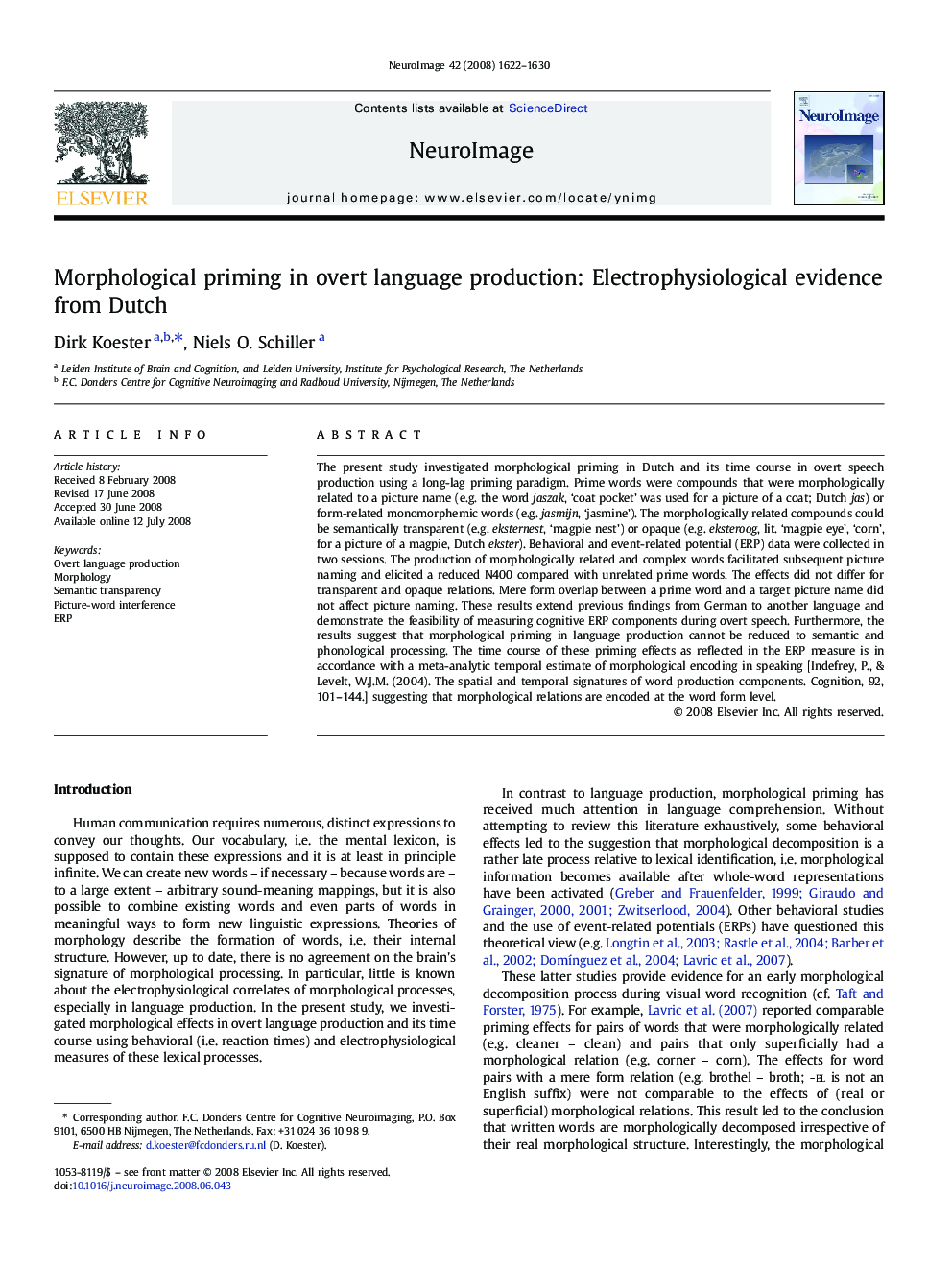| Article ID | Journal | Published Year | Pages | File Type |
|---|---|---|---|---|
| 6038935 | NeuroImage | 2008 | 9 Pages |
Abstract
The present study investigated morphological priming in Dutch and its time course in overt speech production using a long-lag priming paradigm. Prime words were compounds that were morphologically related to a picture name (e.g. the word jaszak, 'coat pocket' was used for a picture of a coat; Dutch jas) or form-related monomorphemic words (e.g. jasmijn, 'jasmine'). The morphologically related compounds could be semantically transparent (e.g. eksternest, 'magpie nest') or opaque (e.g. eksteroog, lit. 'magpie eye', 'corn', for a picture of a magpie, Dutch ekster). Behavioral and event-related potential (ERP) data were collected in two sessions. The production of morphologically related and complex words facilitated subsequent picture naming and elicited a reduced N400 compared with unrelated prime words. The effects did not differ for transparent and opaque relations. Mere form overlap between a prime word and a target picture name did not affect picture naming. These results extend previous findings from German to another language and demonstrate the feasibility of measuring cognitive ERP components during overt speech. Furthermore, the results suggest that morphological priming in language production cannot be reduced to semantic and phonological processing. The time course of these priming effects as reflected in the ERP measure is in accordance with a meta-analytic temporal estimate of morphological encoding in speaking [Indefrey, P., & Levelt, W.J.M. (2004). The spatial and temporal signatures of word production components. Cognition, 92, 101-144.] suggesting that morphological relations are encoded at the word form level.
Related Topics
Life Sciences
Neuroscience
Cognitive Neuroscience
Authors
Dirk Koester, Niels O. Schiller,
